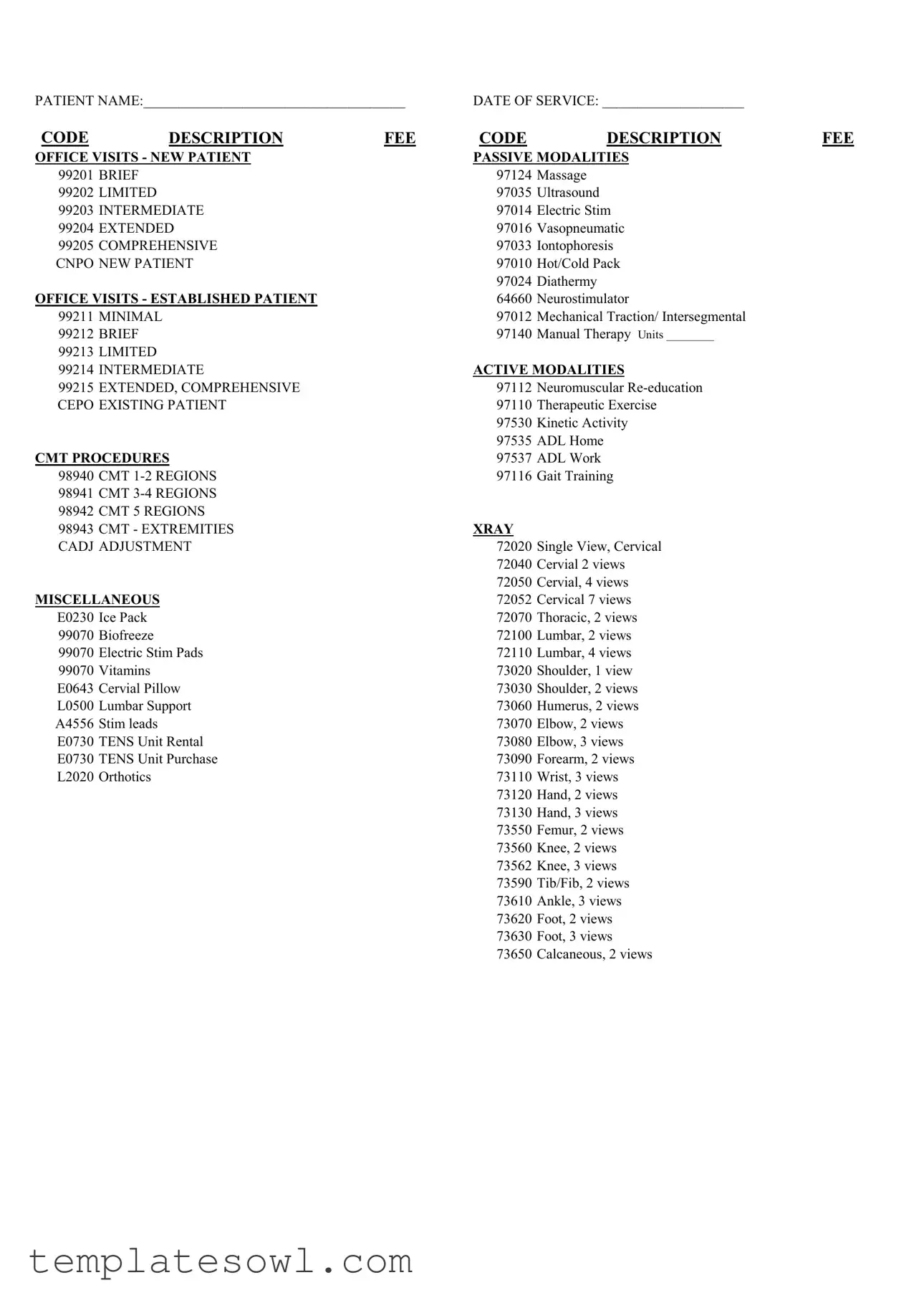What is a Chiropractic Superbill?
A Chiropractic Superbill is a detailed document provided by a chiropractor to a patient that outlines the services received during an appointment. It includes pertinent information such as the date of service, codes for various treatment modalities, and the associated fees. Patients use this form to submit claims to their insurance companies for reimbursement.
What information is included in a Chiropractic Superbill?
The Superbill contains key information such as the patient's name, date of service, and a breakdown of the services provided. Each service is accompanied by a corresponding code (CPT codes) and the fee charged for that service. It will also list any additional treatments or modalities that were utilized during the visit.
How do I use a Chiropractic Superbill for insurance claims?
To use the Chiropractic Superbill for insurance claims, first ensure that all information is accurate. Next, submit the completed Superbill to your insurance provider along with any required forms they may request. Keep a copy of the submitted Superbill for your records. Insurance companies will review the claim for potential reimbursement based on their policy terms.
Are all services covered by insurance when using a Chiropractic Superbill?
Not all services listed on a Chiropractic Superbill may be covered by every insurance plan. Coverage varies widely based on the patient's specific insurance policy. It is advisable for patients to check with their insurance provider beforehand to understand what services are eligible for reimbursement.
What are CPT codes?
CPT codes, or Current Procedural Terminology codes, are numeric codes used to identify medical services and procedures. In a Chiropractic Superbill, these codes help detail each service delivered during the appointment. The purpose is to standardize the documentation of healthcare services for billing and insurance purposes.
Can I obtain a Chiropractic Superbill for any appointment?
Yes, you can request a Chiropractic Superbill for any appointment with your chiropractor. It is best to ask for this document at the end of your visit, especially if you plan to submit it to your insurance company for reimbursement.
What happens if my insurance denies the claim submitted with the Superbill?
If your insurance company denies your claim, you can appeal the denial. The Chiropractic Superbill will provide necessary details to support your appeal. Contact your insurance provider for specific information on their appeal process, and ensure all documentation, including the Superbill, is included in your submission.
How can I check if my chiropractor accepts my insurance?
To determine if your chiropractor accepts your insurance, you can call their office directly or check their website. The office staff can provide information about accepted insurance plans and whether they will issue a Chiropractic Superbill for submission.
Is there a charge for receiving a Chiropractic Superbill?
Typically, patients do not incur a separate fee for receiving a Chiropractic Superbill. It is usually provided as part of the overall service rendered during an appointment. If you have questions about potential charges, it’s best to ask your chiropractic office for clarification.
